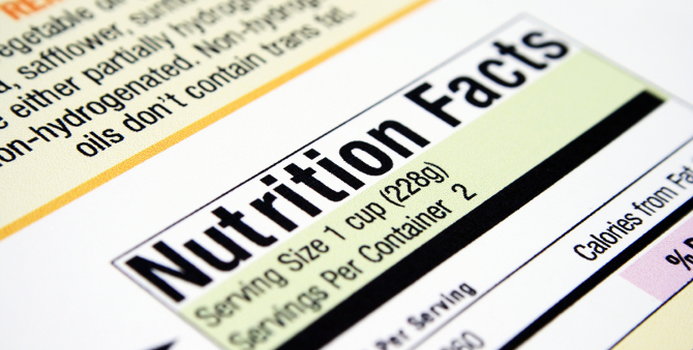Ever walk down a grocery store aisle and try to decipher labels? Or have you had a hard time deciding whether a product labeled as "low fat" is better than "low sugar?" You are not alone. Research has shown that most people have difficulty choosing between products because of the confusing labels. Almost every time I visit the grocery store, I find a new product claiming to be better than others. I take the time to read the ingredients and the nutrition facts label to determine which product I will buy.
What if you do not understand the ingredients, or don't have time to read them? Then you have to rely on the health claims. The Food and Drug Administration (FDA) has somewhat regulated the use of these claims, and has defined what each mean.
Low vs. Reduced
When you see "reduced fat" labeled on a product, it is safe to assume that the food item has at least 25% less fat than the original version. For instance, a box of reduced fat chocolate chip cookies would have 25% less fat per serving than chocolate chip cookies of the same brand without a health claim. The same applies for reduced calories, sodium, cholesterol, and sugars.
For a food to be considered "low" in something, it depends on the nutrient in question. To qualify as a "low" product, the FDA requires that the food not have had any additional processing compared to the original version. A product labeled as "low fat" means that there are 3g or less per serving (than the original version), and only 30% of the food's calories can come from fat. "Low cholesterol" means the food contains 20 mg or less per serving, and "low sodium" indicates that each serving has fewer than 140 mg per serving than does the original version. "Low calorie" for a snack or side dish would mean 40 calories or less per serving, while for a main dish, this label would indicate fewer than 120 calories.
Light/Lite
To make matters more confusing, some products will use the label "light" or "lite." Fortunately, the FDA has also set guidelines for using these words. If more than 50% of a product's calories come from fat, then to use the "light" claim, the new version must decrease the fat content by 50%, in addition to reducing calorie amounts.
In addition, products may also be labeled as "light" when it is low-calorie, low-fat, and has a sodium reduction of at least 50% from the original version. For a product to be "light" in reference to sodium only, the sodium content must be decreased by 50%. In reference to salt, health claims will be labeled as either "lightly salted," "no salt added," or "unsalted." For "no salt added" and "unsalted" labels, the product must also include the language: "This is not sodium free" if sodium if the product does have sodium, even if it does not include salt.
Choosing the Product That Is Right for You
Once you recognize the definition for each term, you need to understand how to apply it to your daily habits. Which product do you choose: low-fat, low-sugar, low-cholesterol, or low-sodium? To answer this question, you need to evaluate your needs. I typically advise diabetics to target foods that are low in sugar or are sugar-free. The difficulty in following this rule is that diabetics also need to be careful with the amount of carbohydrates they eat at each meal. As a general rule of thumb, it is probably safest to consult your doctor.
If you are trying to lose weight, you may find that limiting calories helps you shave off pounds, while others find lowering fat more useful. Keep in mind that if something is light/lite in sugar, then it probably has an increase in fat. The same is true for low-fat items as manufacturers compensate for by adding more sugar. However, this is not always true, so it is best to carefully read the ingredients list or Nutrition Facts label. In addition, light and sugar-free items will almost always contain an artificial sugar. If this is a concern, you may want to consider lower fat options instead.
Basically, depending on your needs and health issues, you may need to pick and choose which products from which you feel you would benefit the most. Foods with a health claim are almost always processed. When in doubt, your best bet is always to eat fresh and whole foods (less processed) to help you lose weight or live healthier lifestyle.
Rhea Li is a Registered Dietitian who received her Bachelor's degree in Nutrition and Master's degree in Public Health from the University of Texas. She has a special interest in working with children and has received her certification in pediatric weight management. Currently, she is working on a research study to determine the importance of nutrition in pediatric cancer patients. In the past, she has worked with pregnant women and their children. In her spare time, she enjoys being with family, exercising, traveling and of course, eating. To contact Rhea, please visit dazzlingdietitian.blogspot.com or her Twitter account, Rhea_Li.



